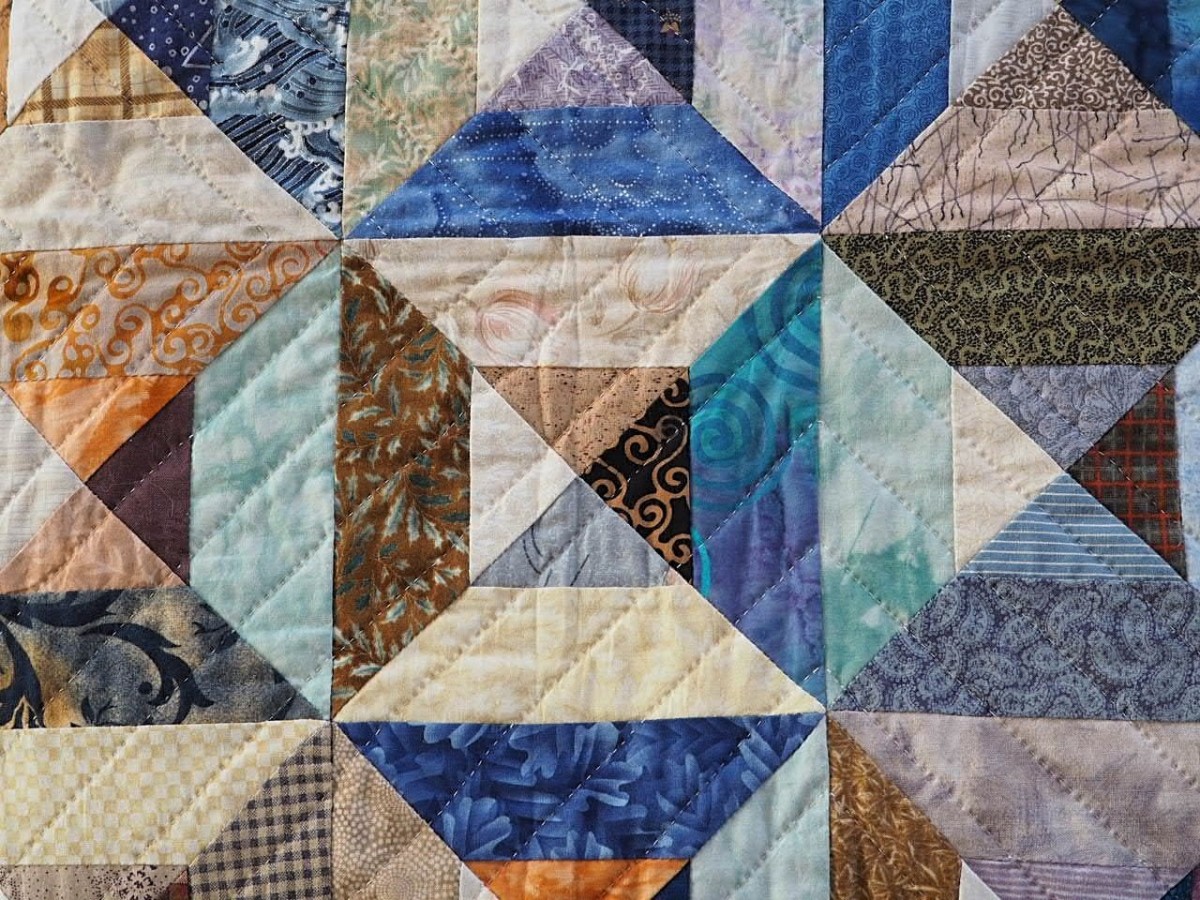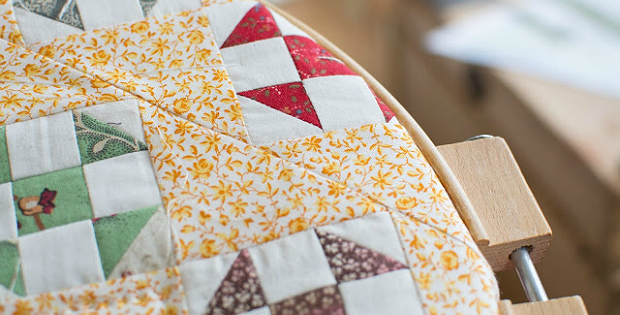What Are Quilt Templates or Quilting Rulers

Quilt templates are an essential tool for any quilter who wants to create intricate and unique quilt designs. These templates, also known as quilt rulers or quilt patterns, are used to create repeating shapes and designs that form the basis of a quilt. There are many different types of quilt templates available, from simple shapes like squares and triangles to more complex designs like stars and hexagons.
Mastering a quilting ruler involves learning to read measurements, choosing the right ruler size, and practising proper cutting and piecing techniques. If you are interested in learning more about quilt templates, this article will provide you with a comprehensive guide on how to get started, the different types of quilt templates available, as well as their benefits and uses. We will also provide tips on how to choose the right template for your project, as well as how to use and care for your templates.
Whether you are a beginner or an experienced quilter, quilt templates can help take your quilting to the next level. With a wide variety of templates available, you can create endless combinations of shapes and designs to make your quilts truly unique. So why not explore the world of quilt templates and see where your creativity takes you?
The Different Types of Quilt Template

A quilting ruler allows for precise cuts, consistent piecing, and accurate measurements, resulting in beautiful and professional-looking quilted projects. There are many different types of quilt templates available, each with its unique shapes and designs. Here are some of the most common types of quilt templates:
- Square templates: Square templates are the most basic and versatile type of template. They come in various sizes and can be used to create square-shaped blocks or to cut fabric for other templates.
A quilting square ruler is essential for precise fabric cutting. It helps create beautiful patchwork quilts and cushion covers.
- Triangle templates: Triangle templates come in many different shapes and sizes, such as equilateral triangles, isosceles triangles, and half-square triangles. They are used to create angular shapes and designs in quilts.
- Hexagon templates: Hexagon templates are used to create six-sided shapes, which can be used to create a wide range of quilt designs, from traditional to modern. Hexagon acrylic quilting templates with seam allowance are a useful tool for precise fabric cutting. Check them out on Amazon: https://www.amazon.com/Hexagon-Acrylic-Quilting-Templates-Allowance/dp/B01BCZTPVG.
- Circle templates: Circle templates are used to create circular shapes in quilts. They come in various sizes and can be used to create both large and small circles.
- Applique templates: Applique templates are used to create intricate shapes and designs that are then appliqued onto a quilt top. They come in many different shapes and sizes, from flowers and animals to geometric shapes and letters.
- Diamond templates: Diamond templates are used to create diamond-shaped pieces of fabric. They are often used in quilts that feature complex geometric designs. Diamond quilting acrylic templates with seam allowance ensure accurate fabric cutting. Get them on Amazon: https://www.amazon.com/Diamond-Quilting-Acrylic-Templates-Allowance/dp/B016TT7IN2.
There are many other types of quilt templates available, including star templates, curved templates, and more. Each type of template offers unique design possibilities, allowing quilters to create a wide range of quilt designs.
The Benefits of Quilt Templates: Why You Should Incorporate Them in Your Quilting Projects

There are many benefits to using a quilt ruler in your quilting projects. Here are some of the key advantages:
- Accuracy: Quilt templates are designed to be precise and consistent in size and shape, which helps ensure that your quilt blocks fit together perfectly. Using templates can help you avoid mistakes and save time in the cutting and piecing process. Get precise cuts for patchwork crosses with this quilting template featuring seam allowances. Check it out on Amazon: https://www.amazon.com/Patchwork-Crosses-Quilting-Template-Allowance/dp/B074LW4X88.
- Variety: Quilt templates come in a wide range of shapes and sizes, offering endless possibilities for creating unique quilt designs. You can mix and match different templates to create your custom designs or use pre-designed templates to create more complex patterns.
- Efficiency: Using quilt templates can help you save time in the cutting and piecing process, as you can quickly and easily cut out multiple pieces of fabric at once. This is especially useful when working with complex designs that require many small pieces.
- Consistency: When using quilt templates, you can be sure that all of your quilt blocks will be the same size and shape, which is important for creating a quilt that lays flat and looks professional.
- Creativity: Quilt templates can inspire creativity and help you come up with new design ideas. By experimenting with different templates and fabrics, you can create quilts that are uniquely your own. Add a creative touch to your patchwork with these cross-quilting templates. Buy now on Amazon: https://www.amazon.com/Patchwork-Crosses-Quilting-Template-Allowance/dp/B01GCWF39M.
Tips and Tricks for Effectively Using Quilt Templates in Your Projects

Here are some tips and tricks to help you use quilt templates efficiently:
- Choose the right size: When selecting a quilt template, make sure to choose the right size for your project. It’s important to measure your fabric carefully and choose a template that fits your desired block size.
When using a quilting ruler, place it firmly on the fabric, align the markings accurately, and use a rotary cutter for clean cuts.
- Use a rotary cutter: A rotary cutter is a great tool to use with quilt templates, as it allows for accurate and efficient cutting. Make sure to use a sharp blade and cut slowly and carefully.
- Secure the template: When using a template to cut fabric, make sure to secure the template firmly in place to avoid slipping or moving. You can use a non-slip mat or adhesive tape to keep the template in place.
- Mark the fabric: It’s a good idea to mark your fabric before cutting it with a quilt template. You can use a fabric marker or pencil to trace the template onto the fabric, which will help ensure accurate cuts.
- Rotate the template: When working with multiple pieces of fabric, it can be helpful to rotate the template to ensure that you are cutting each piece in the same direction. This will help ensure that your blocks fit together properly.
- Store templates properly: When you’re not using your quilt templates, make sure to store them in a safe and organized manner. You can use a template organizer or storage box to keep them in good condition.
- Practice makes perfect: Using quilt templates can take some practice, so don’t be discouraged if it takes a few tries to get the hang of it. With time and practice, you’ll be able to use templates with ease and create beautiful quilt blocks.
Essential Supplies and Tools for Using Quilting Templates like a Pro

To use quilting templates, you will need the following supplies and tools:
- Quilting templates: These are pre-cut plastic or cardboard shapes that are used to cut the fabric into specific shapes and sizes.
- Fabric: Choose high-quality quilting cotton fabric that is appropriate for your project. You will need enough fabric to cut into the shapes required by the templates.
- Rotary cutter: A rotary cutter is a must-have tool for using quilting templates. It allows you to cut fabric with precision and accuracy.
- Cutting mat: A self-healing cutting mat is essential for using a rotary cutter with quilting templates. Choose a large cutting mat that can accommodate your templates and fabric.
- Quilter Ruler: A clear acrylic quilter ruler is necessary for measuring and cutting fabric accurately. Choose a ruler that is at least as long as the longest side of your quilting templates.
- Fabric marker or pencil: A fabric marker or pencil is used to mark the fabric when using quilting templates. Choose a marker or pencil that is easy to see on your fabric but can be easily removed or washed out.
- Pins or clips: You will need pins or clips to hold the fabric in place when cutting with quilting templates. Choose pins or clips that are easy to use and won’t damage your fabric.
- Iron and ironing board: An iron and ironing board are necessary for pressing the fabric after cutting and sewing. Make sure your iron is set to the appropriate temperature for your fabric type.
High-End Quilting Rulers for All Skill Levels: Ideal for Beginners and Professionals Alike

- Creative Grids Non-Slip Quilting Ruler – This brand is known for its high-quality, non-slip rulers that make cutting fabric more accurate and safe.
- Omnigrid Quilting Rulers – Omnigrid is another popular brand for quilting rulers. Their rulers are known for their accuracy and durability.
- Bloc Loc Half-Square Triangle Rulers – These rulers are designed specifically for cutting and trimming half-square triangles, making the process faster and more accurate.
Conclusion
Overall, quilt templates are a valuable tool for quilters of all skill levels. They offer precision, efficiency, and a wide range of design possibilities, making them an essential part of any quilter’s toolkit. When choosing quilt templates, consider the design you want to create, the size of your project, and your personal preferences. Additionally, don’t hesitate to experiment with new templates and techniques to expand your quilting skills and creativity.
Using quilt templates requires a combination of patience, precision, and attention to detail. With the right supplies and tools, you can create beautiful quilt blocks with ease.